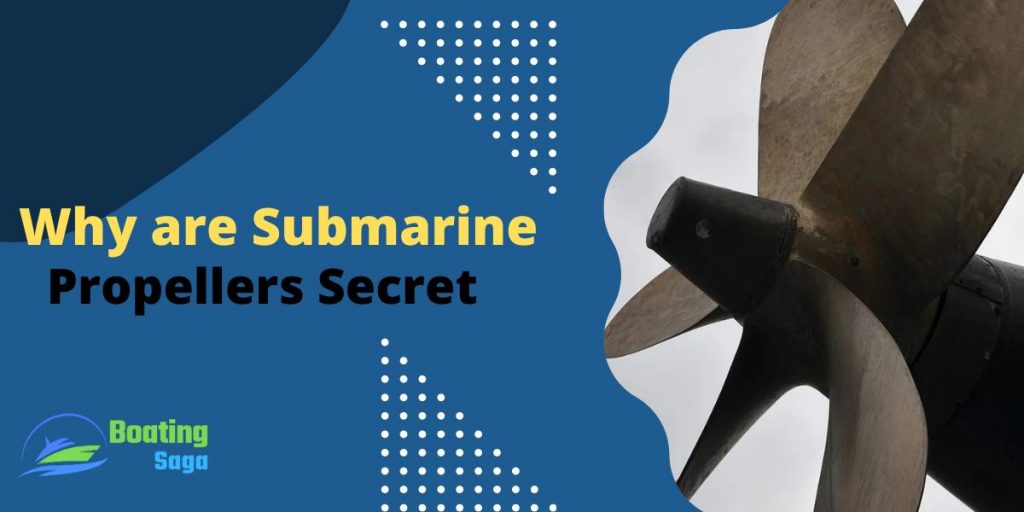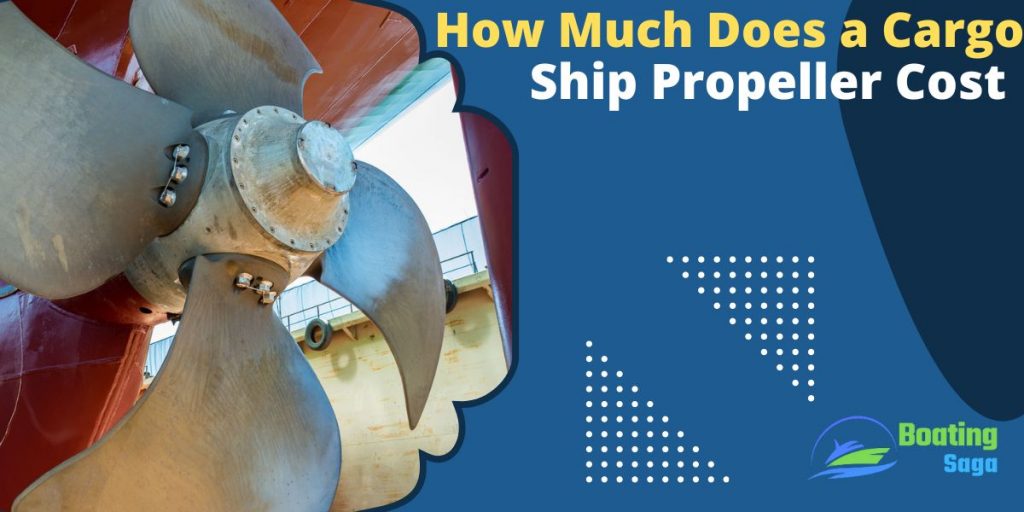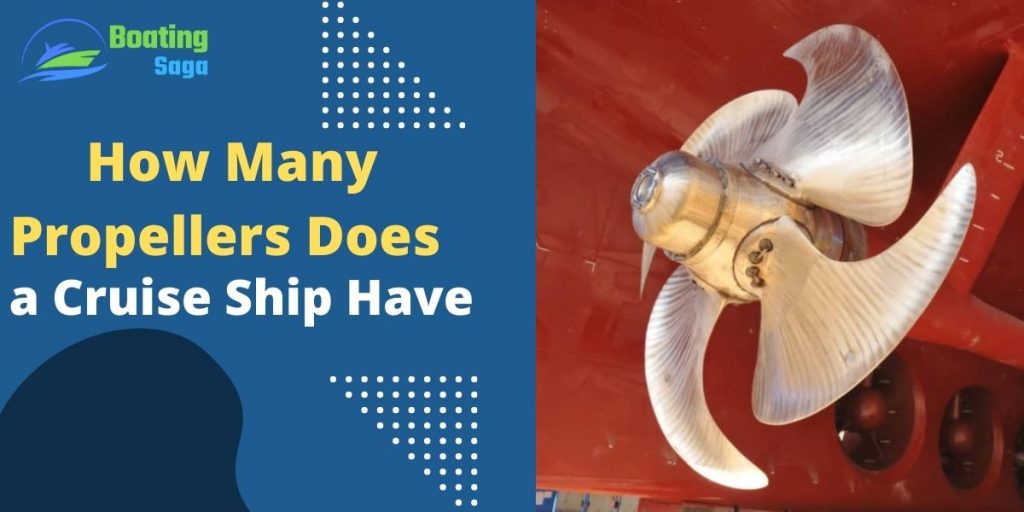
When it comes to cruising, the size of the vessel is an important consideration. Just like with air travel, the larger the plane or cruise ship, the more passenger cabins and amenities it will have.
How Many Propellers does a Cruise Ship Have
A cruise ship typically has four propellers. Propellers are placed at the back of the ship and work to move it through the water. The more propellers a cruise ship has, the more power it has to move and steer. In addition, multiple propellers create a more stable ride for passengers.
The size and number of propellers on a cruise ship can vary depending on the model and make. Some newer ships have six propellers – two on either side of the ship near the front and back.
Propulsion systems also include jet engines which help create a cushion of air under the hull, providing lift and reducing drag.
How big is a cruise ship propeller in diameter?
The diameter of a cruise ship propeller can be anywhere from 9 to 23 feet (7 meters). The size of the propeller is important because it dictates how much power the engine can produce. Larger propellers require more power, but they also create more drag on the ship. For this reason, cruise ships usually have several different-sized propellers so they can choose the best option for each situation.
What are Cruise Ship Propellers Made of?
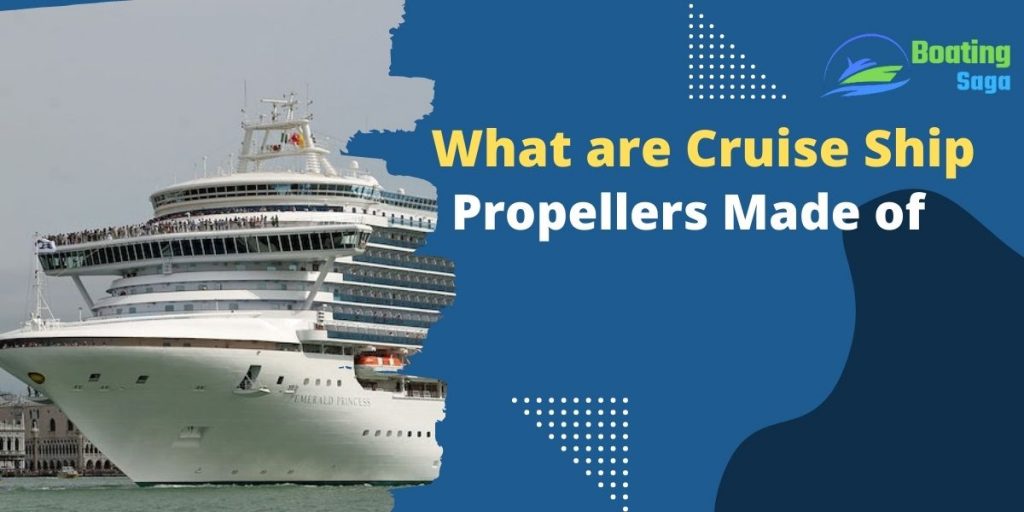
Most cruise ship propellers are made of bronze. However, some larger and more expensive ships have propellers made of stainless steel or titanium. Bronze propellers are typically cast in a mold and have a very smooth finish.
This finish helps to reduce drag and increase efficiency. Stainless steel and titanium propellers are machined from a solid piece of metal, which makes them stronger and less likely to corrode.
Why Do Cruise Ships Need So Many Propellers and what are the dangers of it?
When it comes to cruising, the engines and propellers are what make the ship move. Each cruise ship has at least three large propellers that help it push through the water. But why do these ships need so many propellers?
The more propellers a ship has, the more thrust it can create. This is important because it allows the ship to move faster and navigate through rougher waters. Additionally, having more than one propeller helps to create stability for the ship. If one propeller were to fail, the other two would still be able to keep the ship moving.
One issue with multiple propellers is that they can create turbulence in the water around the ship. This can cause the ship to rock back and forth and make it difficult for passengers to walk around on deck. It can also cause problems for the crew, who have to work in close proximity to the moving propellers.
Another concern is that multiple propellers can create a lot of noise. This can be especially problematic near ports where people are trying to sleep or relax.
How do you know if your cruise ship has four or five propellers?
There is not one definitive answer to this question. However, there are some things that you can look for to help you determine if your cruise ship has four or five propellers. One indicator is the number of blades on the prop. Most ships with four propellers have three blades, while those with five propellers often have four blades.
Another way to tell is by the sound the ship makes. Four-propeller ships make a distinct “thumping” noise, while five-propeller ships make a more subtle “whirring” sound.
Additionally,One way to tell is to look at the ship’s stern. If you see two larger propellers in the middle with two smaller ones on either side, then it has four propellers. If you see three larger props in the middle with two smaller ones on either side, then it has five props.
How much power do cruise ship propellers generate?
When it comes to cruise ships, the propellers are one of the most important components. They are responsible for generating the power that moves the ship through the water. Most cruise ships have three or four propellers, which are each about 20 feet in diameter.
The amount of power that these propellers generate can vary depending on a number of factors, including the type of ship, the speed at which it is traveling and the weight and size of the passengers and crew.
Generally speaking, a cruise ship with four propellers can generate between 80,000 and 190,000 horsepower. This is enough power to move a ship that weighs more than 100,000 tons and travel at speeds up to 25 knots.
How fast do cruise ship propellers spin?
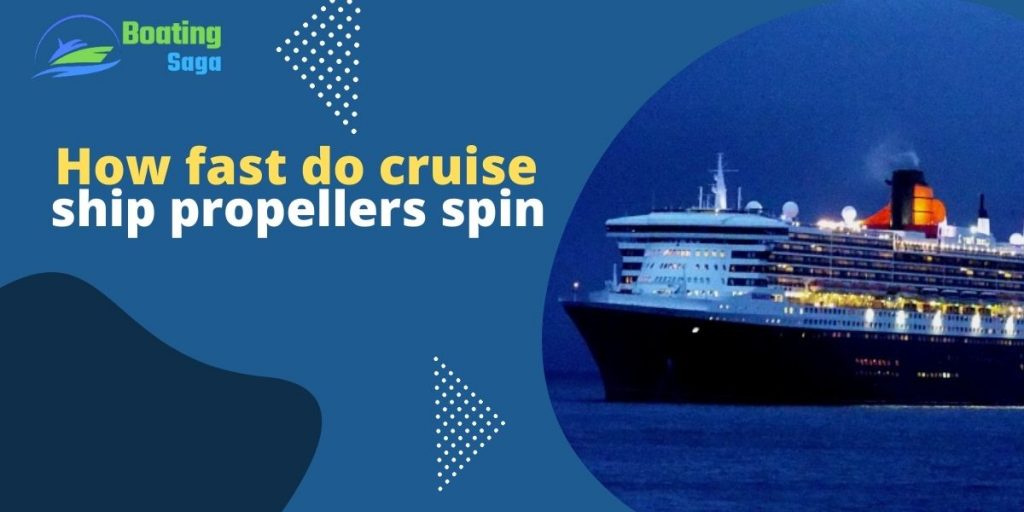
Cruise ship propellers are one of the largest and most important pieces of machinery on a vessel. They play a major role in the overall speed and performance of the ship. How fast do they spin?
Most cruise ship propellers spin at around 200-300 revolutions per minute (RPM). However, larger propellers can reach speeds of up to 1000 RPM. This is important to keep in mind when considering how fast a cruise ship can travel.
The faster the propeller spins, the more thrust it produces. This means that the ship can travel faster and smoother through the water. It also helps create more lift, which is necessary for taking off and landing.
For this reason, cruise ships typically operate at speeds between 20 and 25 knots (about 23-29 mph).
What Happens if the Propeller System Fails on a Cruise Ship?
A propeller system is an important component of a cruise ship. It helps the ship move through the water and provides power for the vessel. If this system fails, the cruise ship can be stranded and unable to move.
This could lead to a number of problems for the passengers and crew on board. The ship may not be able to reach its final destination, or it may have to be towed back to shore. There could also be safety concerns if the ship is unable to move quickly in an emergency situation.
Passengers could find themselves in dangerous situations if the ship is stuck in a storm or if there is a fire on board. It is important for cruise ships to have backup systems in place in case of a propeller failure.
How do cruise ships avoid hitting things with all those propellers?
Every cruise ship has at least one propeller to help it move through the water. Propellers are huge and can cause a lot of damage if they hit something. So how do cruise ships avoid hitting things with all those propellers?
One way is to use a special type of sonar called a prop scanner. This scanner helps the captain know where the ship’s propellers are in relation to other objects in the water. If there is danger of hitting something, the captain can slow down or change course.
Another way cruise ships avoid hitting things is by having a crew that scans the water ahead for obstacles. They keep watch for things like rocks, buoys, and other boats. If they see something that could be dangerous, they will report it to the captain.
Cruise ship propeller myths busted

Cruise ship propellers are a vital part of the ship and its operation. However, there are many myths and misconceptions about these devices. In this article, we will bust some of the most common myths about cruise ship props.
Myth 1: Cruise ship propellers can suck people overboard.
This is one of the most common myths about cruise ship propellers. People often think that the blades on these devices can suck people overboard and into the water. However, this is not true. The blades on a cruise ship propeller are not sharp enough to cause injury to a person. In fact, they are actually quite blunt.
Myth 2: Cruise ship propellers can create giant waves.
Another popular myth about cruise ship propellers is that they can create giant waves that can swamp and damage boats nearby. This is also not true.
Myth 3: You can’t swim near a cruise ship propeller because it will pull you under.
This is another myth that is just not true.
Myth 4: Cruise ship propellers can chop you up into little pieces.
Again, this is not true. Cruise ship propellers are very powerful but they are also very smooth. They would never be able to chop someone up into little pieces.
Myth 4: Cruise ship propellers can only move the ship in one direction.
Fact: Cruise ship propellers can actually rotate 360 degrees, allowing the ship to move in any direction.
Myth 5: Cruise ship propellers can only be used in calm weather conditions.
Fact: Cruise ship propellers can be used in any type of weather condition, including high winds and rough seas.
Myth 6: Cruise ship propellers can easily capsize a boat.
FACT: Cruise ship propellers are incredibly powerful, but they are also designed to be extremely stable.
Myth 7: Cruise ship propellers can cause cavitation.
This is not true. Cavitation is a phenomenon that occurs when a fluid (liquid or gas) flows over a surface and the pressure of the fluid drops below the vapor pressure of the fluid. This causes tiny bubbles to form in the fluid.
When these bubbles collapse, they create a shock wave that can damage the surface of the object that they are flowing over. Cruise ship propellers do not cause cavitation because the pressure of the water never drops below the vapor pressure of water.
Why do ships’ propellers look frightening underwater?

When looking at the underside of a ship, its propellers can look quite frightening. This is because the blades appear to be spinning very quickly and the tips can sometimes seem sharp. However, there is no need to be afraid of them – they are actually very safe.
The propellers are located beneath the waterline so they can push the ship forwards through the water. The blades rotate incredibly fast in order to create enough force to move the vessel. This means that they can sometimes be seen spinning rapidly from above the surface.
Despite their appearance, propellers are not dangerous and are perfectly safe to be around. In fact, they play an important role in helping ships to move safely through the water.
Some Interesting fun facts about Cruise Ship propellers
1. Cruise Ship propellers are massive and can be seen churning the water as the ship moves through the sea.
2. Propellers are essential to cruise ships – they provide the power needed to move the mammoth vessels through the water.
3. Each cruise ship propeller is made up of three blades, which can measure up to 50 feet in length.
4. The blades on a cruise ship propeller are designed to move a lot of water and create a lot of thrust.
5. In order to ensure that passengers have a smooth ride, cruise ship propellers are carefully balanced before they are installed on the ship.
6. Cruise ship propellers can spin at speeds of up to 350 revolutions per minute.
7. In order to prevent the propellers from hitting rocks or other objects in the water, captains will often steer their ships in a zigzag pattern.
Conclusion
Cruise ship propellers help the ship move forward, backward, and side to side. They are an important part of the ship and help it navigate through the water.

